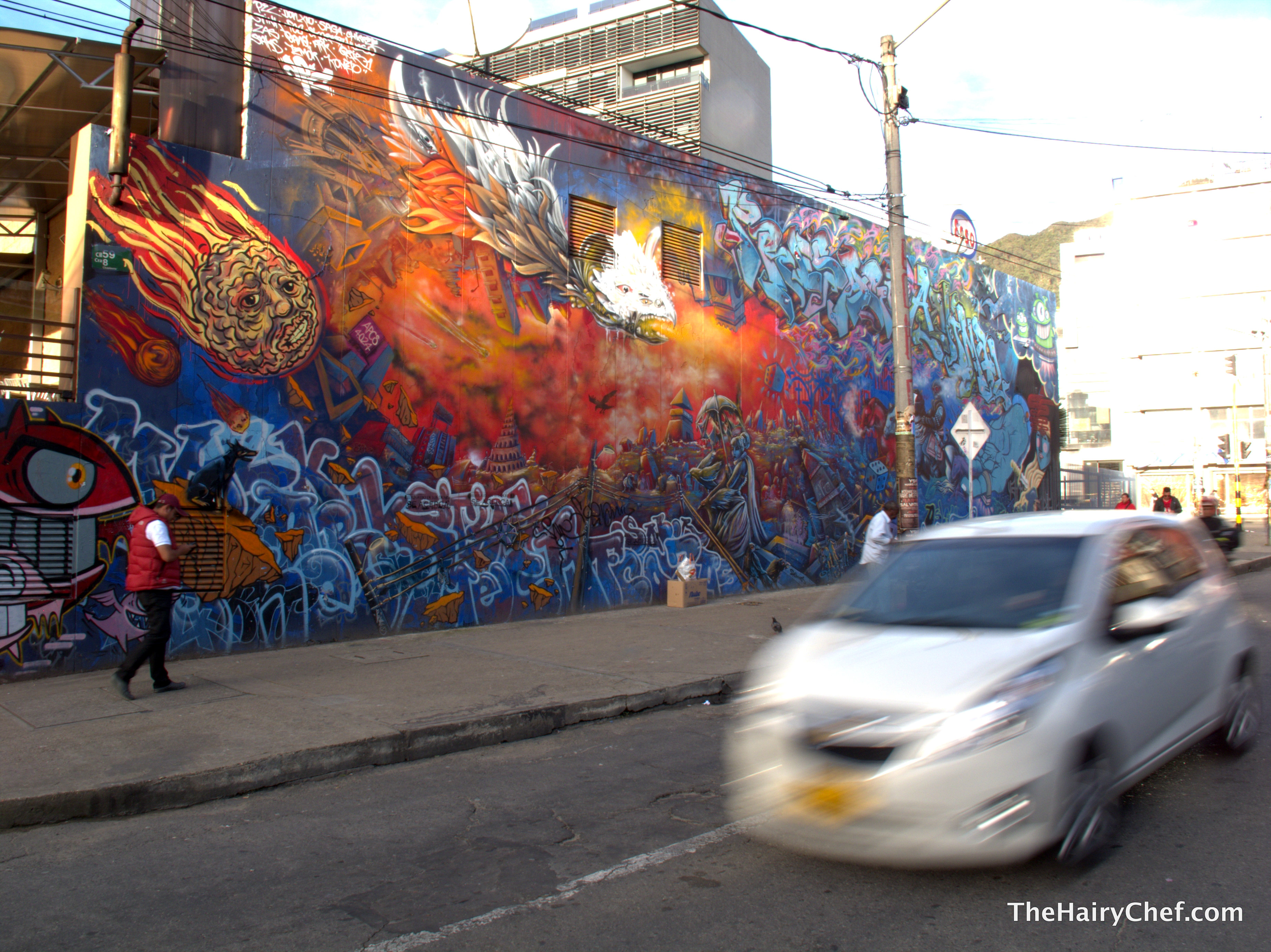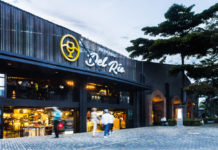
The following is a guest post by The Hairy Chef.
Colombia…the only risk is…
Not understanding Spanish?
Drowning in endless floods of mango juice?
Having too much fun?
Getting sunburnt?
Doing too much cool shit?
Getting the meat-sweats?
This was the running joke amongst the small group of journalists on a recent press trip to through Bogotá.
But hey, so you have a reputation as somewhat violent, you’re struggling to make friends, you just got a whole bunch of secret service agents in deep shit and you want nothing more than start over and be the cool kid: What do you do?
A quick visit to the historical centre of Bogotá, La Candelaria, and the true colour of what is brewing on the surface in the day-to-day lives of Colombians will slap you in the face.
“Yeah I only paid $15,000 for a ticket,” said my housemate the other week after returning from an evening performance of the Bogotá Symphony Orchestra. “That has to be subsidized.” And I suspect it is.

The Colourful Candelaria
Yes it’s quaint and some of the streets are still cobblestone, but there is more to visiting La Candelaria than walking up to Monserrate and eating ajiaco.
La Plaza del Chorro is said to be one of the possible original sites of the foundation of the city, and also serves as the heart, and source of life of the bohemian culture that permeates these streets.
Street theatre, cafes, and street art are everywhere (especially Thursday and Friday nights) and there’s not much you can do to get away from it, as you pass from calle to carrera.
“Sreet art in Bogotá is Prolific,” Lauren explains. “It’s true that in any other city with the same level of street art, there is significantly more international recognition for it as a unique element of their home – artists want to be recognized for the art that is here.”
Lauren and a colleague, Rachel, are at the end of their self-funded travel project through central and south America interviewing female street artists for a book they plan to publish later this year . They came to Bogotá because it was the cheapest way to get to South America, intending to merely pass through.
“We were so enchanted with the density of the art here, we decided to stay for 5 weeks.”

“I think people generally see art as a legitimate means of making a living.” reflects Christian, the founder of Bogotá Graffiti tours. And that’s not just a tolerance to the arts as a means of living…it’s tolerance and desire for the consumption of it too.
“People generally prefer to have their walls and buildings painted with street art because it’s better than the messy tags or the monotonous paint the local council would otherwise use.”
A walk through this part of town will open your eyes to what the arts mean to the new image of the Colombian capital that the Mayor’s office is beginning to etch out. But that really is only the beginning.
The strength of diversity
Reads the poster for this year’s Rock al Parque festival, the third largest free outdoor event of its kind in the world, and the largest on the Latin Continent.
Spanning 3 days, pulling crowds in excess of 300,000 people and providing a platform for the showcase of local artists, musicians, social interest groups and international investors, it is hard to see how this kind of investment in human capital is not going to be a major component of the diet of the Colombian people in years to come.

It’s true that Colombia is battling with a reputation that lingers from its violent past. It is also true that there is an almost tangible collective desire amongst Colombians to be amongst the global community as a country that people reflect on as a major tourist destination.
And although you are only likely to come across one in, say, four or five people on the South American Backpacking trail who have been or intend to come to Colombia, they generally say one thing: It’s one of the best places to go.
Yet on the day-to-day level of things, however, the message from on high is clear:
Thank you, Bogotá, for playing your part in the plan for development

Whether you are out and about on the 300+ km of cycle ways through the city (the largest in South America) or enjoying your Sunday morning on the 120km stretch of closed major roads known as the ciclovia, or perhaps getting your culture on at the free entry policy at all major museums on the last Sunday of every month, Bogotá is a city Bogotanos want to be proud of.
Somehow this is a city that still manages to entertain, shock, offend, fascinate and shine, all in one, but the airs of creativity that feed the people of the Colombian capital are blowing strongly in a way that generates a raw edge to both the underground street cultures and the mainstream artistic offerings, all of which is reflective of the recent establishment of relative political and social stability and the fact that the country has seized its opportunity to develop itself and its image internationally: and now is the time to get amongst it.
________
About the Author: The Hairy Chef is a teacher, a baker, a swimmer, a photographer, a homebrewer and a freelance travel writer from Perth, Western Australia. Currently based in Bogotá, he fell in love with teaching after a 6 week volunteer experience in Thailand – and realized that making people smile is something everyone should believe in.
Follow the folicularly overactive adventures here: www.thehairychef.com












